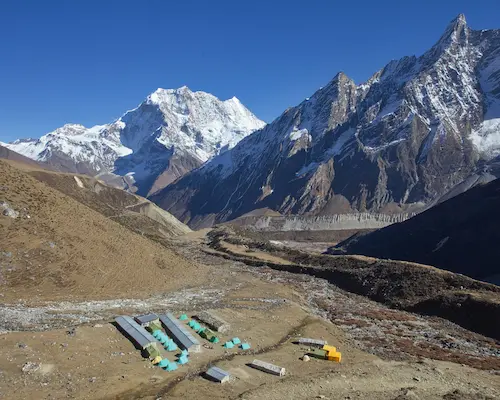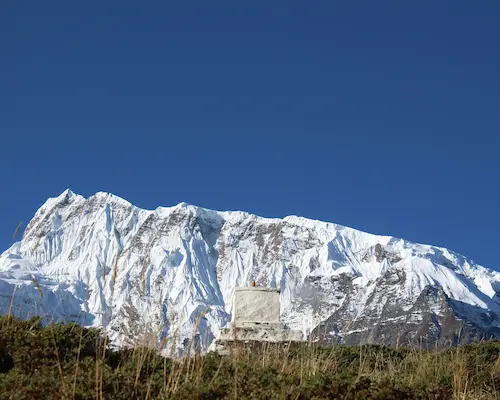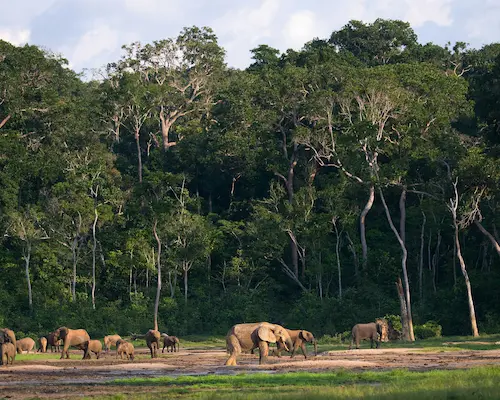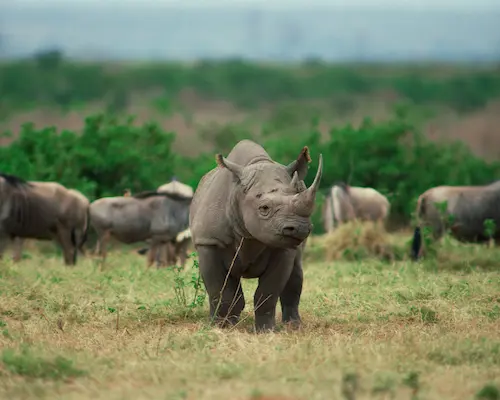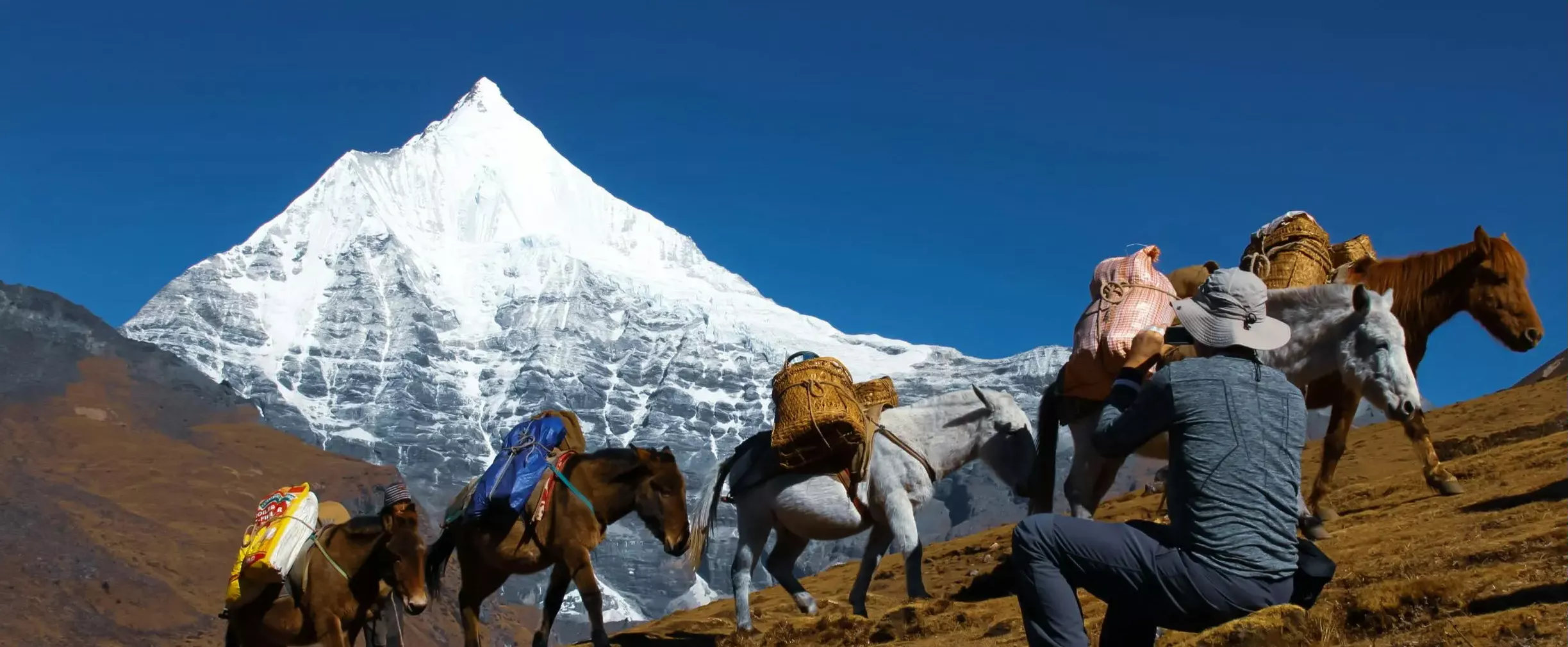Country History
The history of Nepal centers around the Kathmandu Valley, beginning with the Kirantis, who ruled from around the 7th or 8th century B.C. Their notable leader, King Yalambar, is mentioned in the Indian epic Mahabharata. Before them, the Gopalas, known as herders, ruled the valley, but little is documented about their reign. Around 300 A.D., the Lichhavis arrived from northern India, overthrowing the Kirantis and leaving a lasting legacy, including the Changu Narayan temple near Bhaktapur, built in the 5th century.
The Lichhavis' influence eventually gave way to the Thakuri and later the Malla dynasty, which began around 1200 A.D. The Mallas ruled for 550 years, bringing about a golden age of culture and architecture, seen in the beautiful palaces and temples of Kathmandu, Bhaktapur, and Lalitpur. During this period, Nepal was divided into numerous principalities, with Gorkha as one of them, ruled by a Shah king.
In the mid-18th century, Prithvi Narayan Shah of Gorkha unified Nepal and established the Shah dynasty, moving the capital to Kathmandu. This era marked the beginning of a centralized Nepal until 2008. During the 19th century, Jung Bahadur Rana took power as the first prime minister with absolute authority, starting the 104-year Rana regime, during which the Shah kings were figureheads. The Ranas were overthrown in the 1950s, and King Tribhuvan was reinstated, leading to Nepal's first democratic elections in 1959.
The late 20th century saw significant political turmoil, including the 1990 People's Movement, which led to constitutional reforms and the establishment of a parliamentary system. A violent Maoist insurgency began in 1996, and in 2001, most of the royal family was tragically killed. The monarchy was eventually abolished in 2008, and Nepal became a Federal Democratic Republic.
Religion
Nepal is a unique blend of Hinduism and Buddhism, with both religions deeply embedded in the culture. Hindu deities are often found within Buddhist shrines, and followers freely visit each other's places of worship. Despite becoming a secular country in 2006, Hinduism and Buddhism remain the predominant faiths, complemented by Islam, Christianity, Jainism, Sikhism, Bon, and various indigenous practices.
Religious festivals play a major role in Nepalese culture, with Dashain and Tihar being among the most celebrated. Nepal is also home to several pilgrimage sites, including Pashupatinath Temple, Swayambhunath Stupa, and Lumbini—the birthplace of Buddha. The spiritual blend and harmony of different faiths contribute to Nepal's cultural richness.
Nature & Culture
Nepal boasts diverse geography, from the subtropical plains of the Tarai to the majestic Himalayas. It is home to eight of the world's fourteen peaks over 8,000 meters, including Mount Everest. The country is also rich in rivers, many originating in the Himalayas, and has vast forested areas that host diverse wildlife, including endangered species like the Royal Bengal tiger and the Greater one-horned rhinoceros.
Nepal's climate varies significantly with altitude. The monsoon season from June to September accounts for most of the annual rainfall, while regions like Mustang remain dry due to the rain shadow effect. The country's natural beauty attracts trekkers, mountaineers, and nature enthusiasts, with opportunities for rafting, kayaking, and wildlife safaris.
With a population of over 30 million, Nepal is home to more than 100 ethnic groups and around 93 languages. The Gurungs, Magars, Rais, Limbus, Sherpas, and Newars are some of the prominent communities, each contributing to Nepal's cultural diversity. Despite modern influences, traditional customs and caste distinctions remain significant, especially in rural areas.
Nepali is the official language, but English is widely used in business and education. Festivals, traditional music, dance, and art form an essential part of Nepalese life, reflecting the country's rich cultural heritage.
Practical Information for Travelers
- Currency: Nepalese rupees (NPR). Major credit cards are accepted in most high-end establishments, and ATMs are widely available.
- Visa: Tourist visas can be obtained on arrival or through Nepalese embassies. Gratis visas are available for tourists from SAARC countries and China, as well as for stays of three days or less.
- Best Time to Visit: Spring (March-May) and autumn (September-November) are the most comfortable seasons for travel, with pleasant weather for trekking and sightseeing.
Clou Travel offers personalized travel experiences in Nepal, specializing in tours, trekking, and expeditions. Our eco-conscious approach ensures that we showcase Nepal in a way that aligns with your preferences. We provide a range of services, from escorted group tours to independent travel packages, all designed to immerse you in Nepal's cultural and natural beauty. With a dedicated team, we strive to create unforgettable journeys that fulfill your travel dreams.


